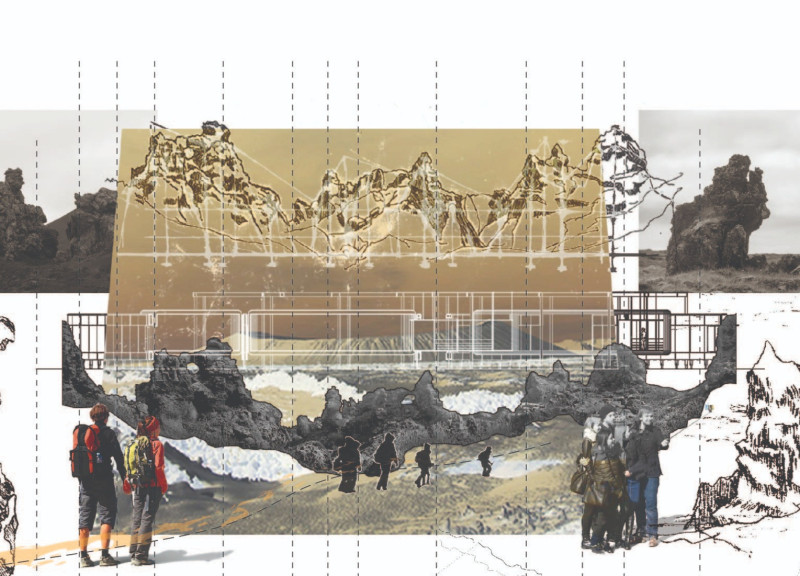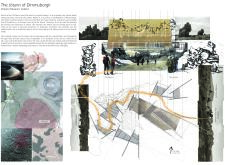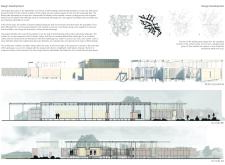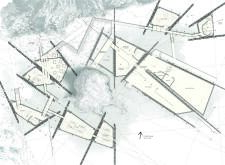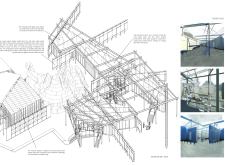5 key facts about this project
The museum's function is to educate the public about Iceland's volcanic landscapes, offering exhibits that connect geological phenomena with local myths. It houses interactive displays, educational materials, and multimedia presentations designed to immerse visitors in the stories and science behind Dimmuborgir. The project encourages an understanding of the delicate relationship between culture and environment in Iceland.
Unique Spatial Relationships and Materiality
One of the defining characteristics of the Jötunn Museum is its integration with the landscape. The architectural form adapts to the natural contours of the site, following the existing rock formations and creating a sense of continuity between the built structure and its environment. The use of materials such as glass, timber, metal, and concrete reflects this relationship. Large glass panels provide panoramic views, inviting natural light and allowing the stunning landscape to become part of the interior experience. Timber elements evoke traditional Icelandic architecture, fostering warmth in contrast to the rugged exterior.
The design also employs vertical and horizontal planes to create defined spaces that encourage exploration. Pathways lead visitors through varied exhibit zones, promoting engagement with both natural and architectural features while maintaining a clear flow throughout the museum. This layout emphasizes the connection between the internal experiences and the external environment, ensuring that nature remains a focal point of the visit.
Innovative Interaction and Educational Experience
The Jötunn of Dimmuborgir Museum prioritizes interactive learning, employing technology to enhance visitor engagement. Exhibit areas are designed to allow for hands-on experiences, facilitating a deeper understanding of volcanic processes and mythological themes. The integration of multimedia installations reinforces educational narratives, allowing for a multifaceted approach to learning.
The museum also incorporates sustainable design principles, reflecting Iceland's dedication to environmental preservation. The choice of durable materials such as reinforced concrete ensures longevity while minimizing maintenance needs, aligning with a commitment to sustainability.
Visitors are encouraged to experience the museum's architectural plans, sections, and designs to fully appreciate the thoughtfulness behind its construction. Detailed exploration of these elements provides deeper insights into how the project addresses its geographical and cultural context. Interested individuals are invited to review the project presentation for a comprehensive understanding of its architectural ideas and design components.


